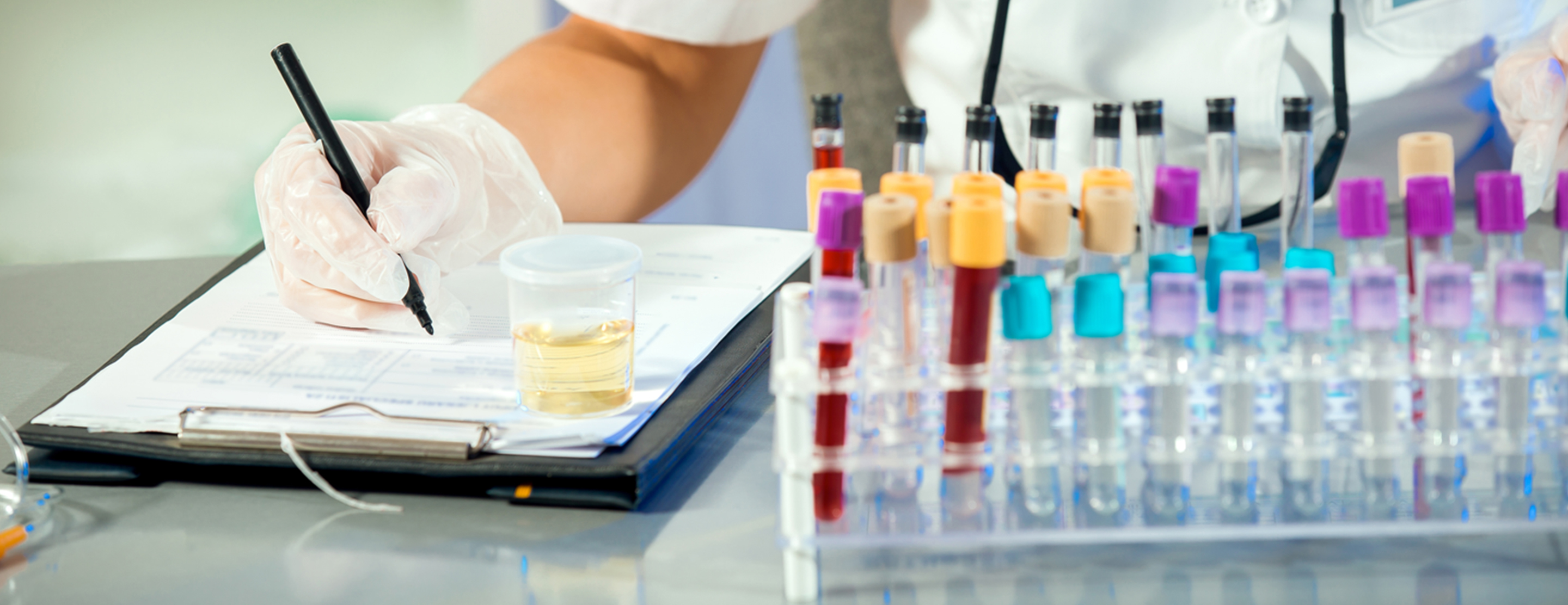
Bilirubin - urine
Definition
Bilirubin is a yellowish pigment found in
This article is about a lab test to measure the amount of bilirubin in the urine. Large amounts of bilirubin in the body can lead to jaundice.
Bilirubin may also be measured with a blood test.
Alternative Names
Conjugated bilirubin - urine; Direct bilirubin - urine
How the Test is Performed
This test can be done on any urine sample.
For an infant, thoroughly wash the area where urine exits the body.
- Open a urine collection bag (a plastic bag with an adhesive paper on one end).
- For males, place the entire penis in the bag and attach the adhesive to the skin.
- For females, place the bag over the labia.
- Diaper as usual over the secured bag.
This procedure may take a few tries. An active baby can move the bag causing urine to go into the diaper.
Check the infant often and change the bag after the infant has urinated into it. Drain the urine from the bag into the container provided by your health care provider.
Deliver the sample to the laboratory or to your provider as soon as possible.
How to Prepare for the Test
Many medicines can interfere with urine test results.
- Your provider will tell you if you need to stop taking any medicines before you have this test.
- DO NOT stop or change your medicines without first talking to your provider.
How the Test will Feel
The test involves only normal urination, and there is no discomfort.
Why the Test is Performed
This test may be done to help diagnose liver or gallbladder problems.
Normal Results
Bilirubin is not normally found in the urine.
What Abnormal Results Mean
Increased levels of bilirubin in the urine may be due to:
- Biliary tract disease
Cirrhosis Gallstones in thebiliary tract Hepatitis - Liver disease
Tumors of the liver or gallbladder
Considerations
Bilirubin can break down in light. That is why babies with jaundice are sometimes placed under blue fluorescent lamps.
References
Berk PD, Korenblat KM. Approach to the patient with jaundice or abnormal liver test results. In: Goldman L, Schafer AI, eds. Goldman-Cecil Medicine. 25th ed. Philadelphia, PA: Elsevier Saunders; 2016:chap 147.
Dean AJ, Lee DC. Bedside laboratory and microbiologic procedures. In: Roberts JR, Custalow CB, Thomsen TW, eds. Roberts and Hedges' Clinical Procedures in Emergency Medicine and Acute Care. 7th ed. Philadelphia, PA: Elsevier; 2019:chap 67.
Riley RS, McPherson RA. Basic examination of urine. In: McPherson RA, Pincus MR, eds. Henry's Clinical Diagnosis and Management by Laboratory Methods. 23rd ed. St Louis, MO: Elsevier; 2017:chap 28.
Review Date: 05/06/2019
The information provided herein should not be used during any medical emergency or for the diagnosis or treatment of any medical condition. A licensed physician should be consulted for diagnosis and treatment of any and all medical conditions. Call 911 for all medical emergencies. Links to other sites are provided for information only -- they do not constitute endorsements of those other sites. Copyright ©2019 A.D.A.M., Inc., as modified by University of California San Francisco. Any duplication or distribution of the information contained herein is strictly prohibited.
Information developed by A.D.A.M., Inc. regarding tests and test results may not directly correspond with information provided by UCSF Health. Please discuss with your doctor any questions or concerns you may have.





